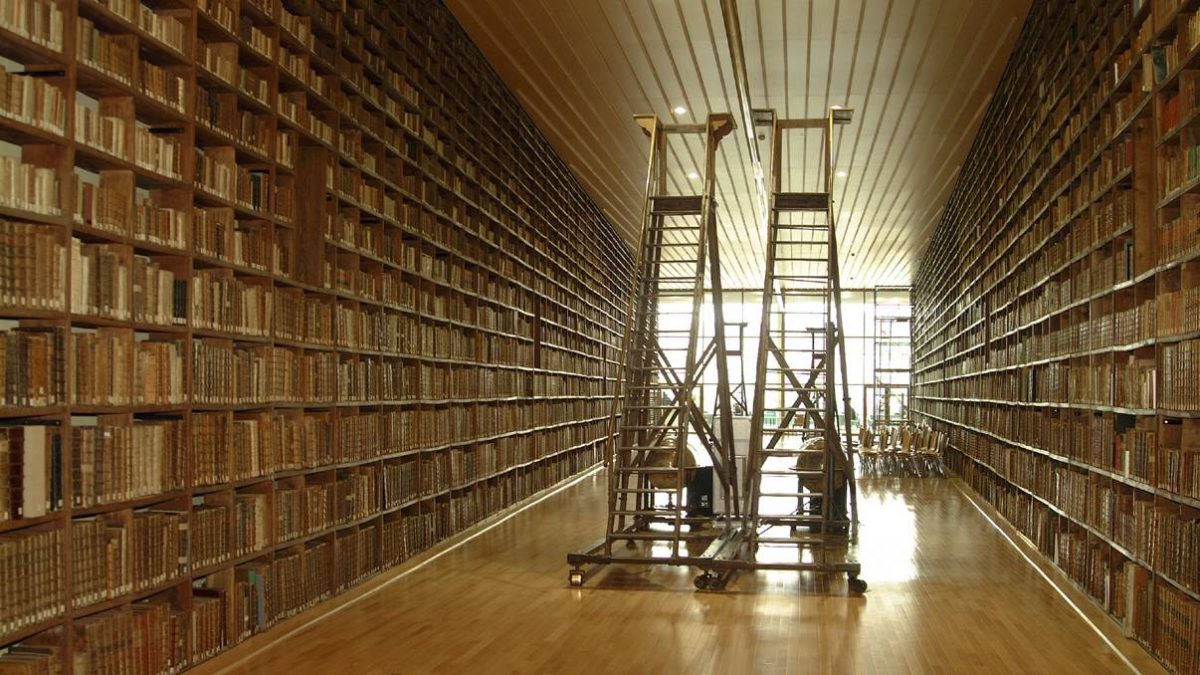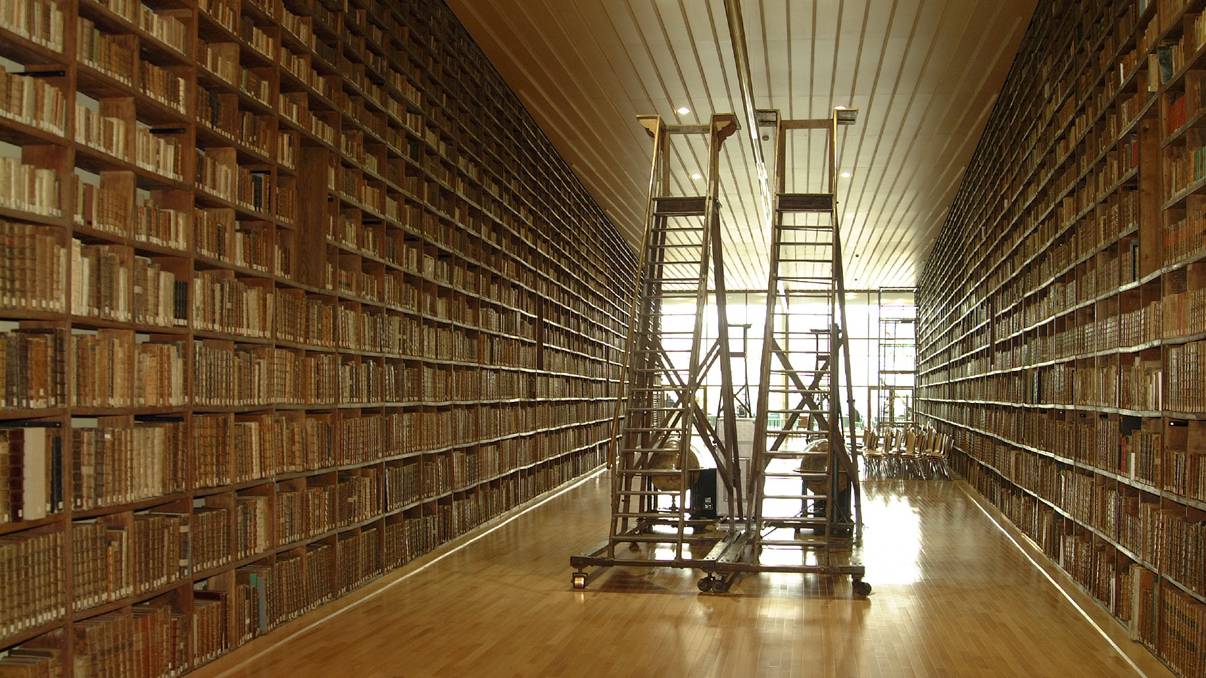In a city with a rich heritage of ancient architectural masterpieces, the Greater Troyes Media Library is something of an exception to the rule.
Is one of the few examples of modern architecture located in the old city centre.
This experimental building is also a masterpiece in its own right, with its architects receiving the Equerre d’Argent award. This prize is the highest distinction that architects can achieve in France.
This building, which stands out from its much older surroundings, is a powerful architectural statement. In the words of its own designers, Pierre du Besset and Dominique Lyon, the Media Library has no façades. More specifically, the façades of this vast quadrilateral building have been replaced with four glass walls. The building was designed in a deliberately unusual, vague shape to blur the lines between indoors and outdoors, between materials and colours.
Quite simply, the Media Library is resplendent in its bright, lively tones. The bluetinged glass stands in marked contrast with the golden net-style roof line, while the yellow ambulatory stands out against the pink staircase.
What makes this architectural UFO all the more surprising is the fact that it houses a collection of truly ancient works. In addition to the 110,000 documents available for public loan, the Media Library’s “Grande Salle” is home to some 50,000 printed books from ancient ecclesiastical libraries, including medieval manuscripts by the Pithou brothers and printed books belonging to canon Jacques Hennequin – the man behind one of France’s first public libraries, which opened in 1651 in Troyes.
And if that weren’t enough, Greater Troyes Media Library also houses the library of the Counts of Champagne. More specifically, it holds the collection that once belonged to Henry I the Liberal and his wife, Mary, Countess of Champagne. It is the oldest known library belonging to a major feudal prince, and records the birth of the courtly, chivalrous culture that was all the rage in the 12th century.

These gems pale into insignificance when compared with the real treasure that lies inside the media library, for it houses France’s largest collection of ancient medieval manuscripts, each copied and decorated by hand in the workshop of the former Clairvaux Abbey. At the time, it was one of the largest libraries in the western Christian world in the Middle Ages.
Out of a total of 1,790 manuscripts recorded in the 15th century, 1,115 survive to this day, and 1,018 can still be seen in Troyes. The Media Library’s collection also features around 400 early prints(1) and printed books dating from the start of the 16th century.
In recognition of this incredible heritage, the collection was included in UNESCO’s Memory of the World Register in 2009, alongside such esteemed company as the Declaration of the Rights of Man and of the Citizen, the Lumière brothers’ films and the Bayeux Tapestry. This international recognition demonstrates the library’s universal value and reach.
In order to celebrate 900 years since the founding of Clairvaux Abbey, the Greater Troyes Media Library has launched a project to create a “virtual Clairvaux library”. The aim of this project is to publish all surviving manuscripts online, so that they can be viewed by internet users from across the globe. It covers each and every manuscript that remains, both those held in Troyes and those housed elsewhere in cities such as Paris, Florence, London, Budapest, Mons, Montpellier and Laon. To achieve this aim, every single manuscript will be scanned and uploaded, so that the virtual library is a true copy of the Clairvaux Abbey collection.
Those who view the collection will note that Bernard of Clairvaux, the founder of the abbey that shares his name, required all manuscripts to be produced in monochrome and in a sober style, reflecting the austerity that underpinned the Cistercian tradition, and which prohibited the depiction of humans or animals or the excessive use of colour
Yet again, this marks a stark contrast with the modern building in which this treasure is housed.
(1) Early prints are printed books published between the dawn of printing and the end of the 15th century. The first examples from Troyes date from 1480, as the city was one of the first to house a printworks.
